Matlock Flood Wall
Overview
Construction Update August 2023
Jackson Civil Engineering are working on behalf of the Environment Agency to build a replacement flood defence at Matlock and reinstate flood protection from the River Derwent. Our project is being delivered in partnership with Derbyshire County Council and Derbyshire Dales District Council.

Construction of the flood wall is now complete, with the entire wall and tie in sections fully cladded with locally sourced Birchover Quarry Gritstone. Once the rest of the in-river works are complete, hand railings and gates will be fitted to provide safe working access for Environment Agency operatives to maintain the walls and drainage systems. To support the heritage look and colour palette of the area, these fittings have been special ordered in traditional styles.
The river side wall is now also structurally complete, with the stone cladding well under way. Cladding is expected to be completed by mid-August, allowing us to begin deconstructing the working platform. Once the platform has been completely removed, we will be able to install the erosion protection along the base of the river wall, ensuring long lasting security of the wall.
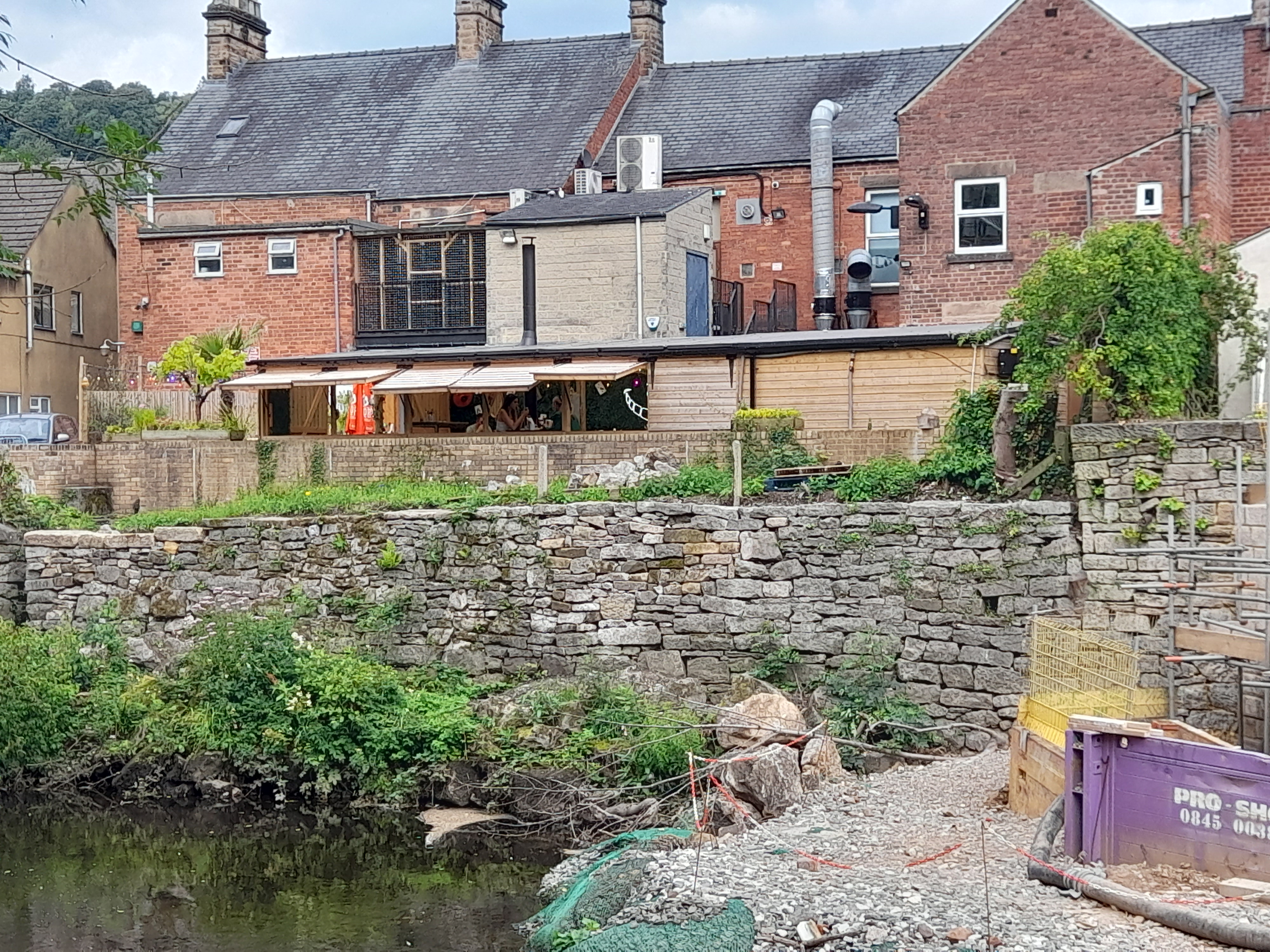
Works have also been completed to the section of wall upstream from the flood wall, directly behind the Mad Hatter. This section had been assessed as in poor condition, with several mature trees rooted within the dry wall and pushing the stones out of alignment, with the potential to destabilise the wall. Utilising the expertise of the local stonemasons, and in consultation with heritage partners and archaeologists, the wall was disassembled by hand. All tree and roots have been removed, and the wall carefully reassembled to its original condition, strengthening the section.
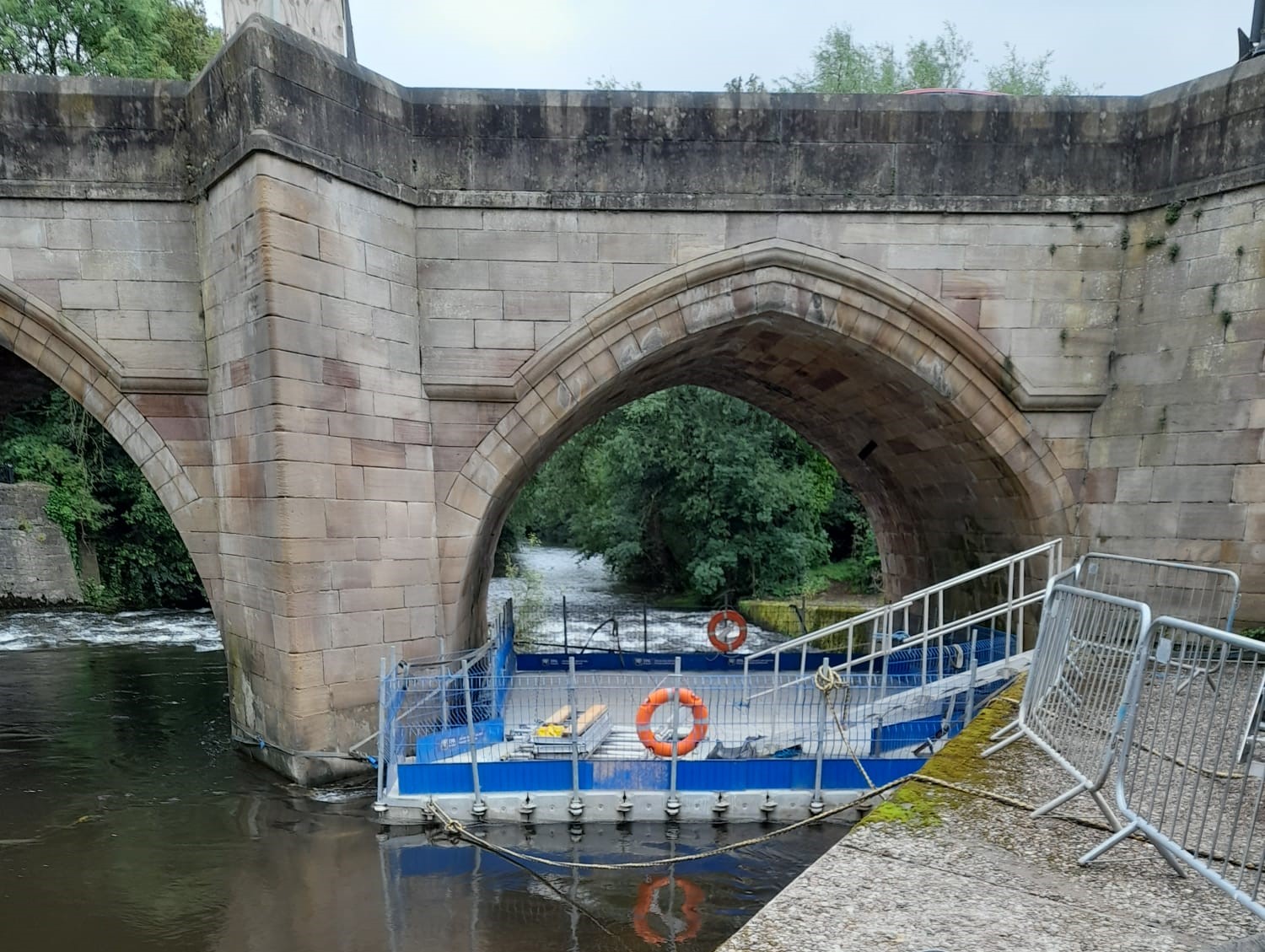
A floating pontoon has been installed within the right hand arch of Matlock Bridge. This is to enable works to remove the graffiti, and complete repointing of the stonework underneath the arches and around the cuttwaters. Once completed on the right arch, the pontoon will be moved to the centre arch, and finally the left arch to complete these works accross the entire bridge.
With the works drawing to a close, plans to demobilise the site and release the A6 have been confirmed. As soon as the working platform has been removed and all river works have been complete the crane will be derigged and leave site. Cleaning and any repairs needed to the surface of the A6 will be carried out, and then the barriers across the A6 will be removed. On the day of reopening, barriers will be switched to the head of Matlock Bridge, which will close from 8pm, allowing the A6 to reopen around 10 minutes later. The bridge will remain closed for around 6 weeks while we return it to the previous single lane configuration. There will be a few overnight single lane closures on crown square to allow for the scraping and resurfacing works, as well as overnight closures of the A6 and Snitterton Road for line painting.
Community update
Whilst works on the walls could not continue, the team have kept busy with other community enhancement projects.
Works in Hall Leys Park sunken garden to replace the timber edges on the flower beds is now complete. All the edging has been replaced with kerbstones, including replacing the metal sheeting in the centre of the fountain and decorative stones. This will provide a long lasting edging, and enable the planting beds a little more security during any future flood events.
The footpaths have also been replaced, relaying the surface with a durable resin mixture. This will be hard wearing and resilient, through all types of weather conditions.
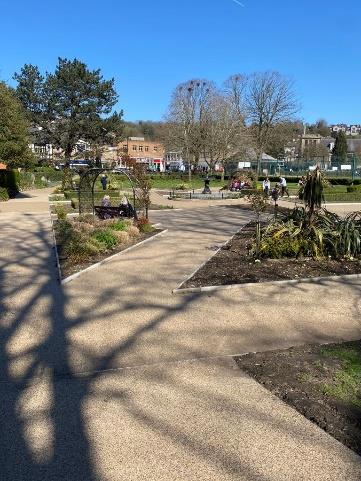
Following completion of the terracing on Knowleston Place, native plants have been donated to the volunteers who kindly maintain it. We’re pleased to see that these have now been planted, and the area is looking beautiful.
While our operatives were replacing the fencing in Knowleston Place, a few members of the public brought to our attention that the fencing further along the footpath had deteriorated, and asked if we might be able to replace that as well. We consulted with the local councils and agreed that we could extend our works to replace it. Works were carried out in January, with the new fence helping to create a safe and attractive area for all.

During the February half term we were delighted to have been able to support a project in partnership with Matlock Civic Association and the local councils. Breaking out the old stump of ‘Ashton’s Tree’ on Smedley Street, we were able to install a larger pedestrian refuge, providing space to then plant an oak tree. This has now been dedicated in memorial to Her Majesty the Queen’s 70 year reign.
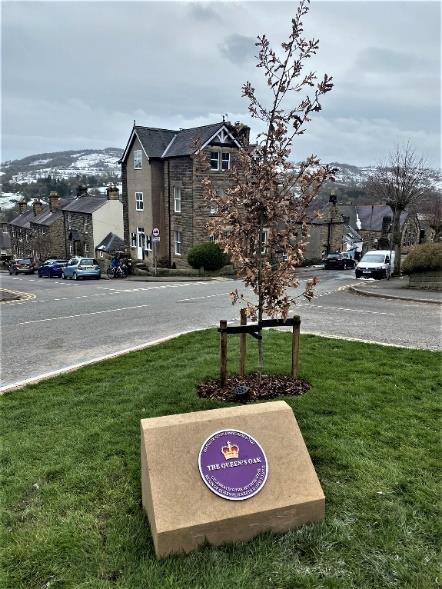
On the 27th of March, our team joined together with Matlock Town Council and Derbyshire Dales District Council in support of the Great British Spring Clean. Covering the town centre and areas of Hall Leys Park, our team collected 4 bin bags of litter.
Following the departure of the traveller encampment on the Railway Carpark, our team went out to clear the area and return the car park to full availability. 5 bulk bags were filled with rubbish and disposed of with our site waste.
We have so far helped to plant over 150 trees within the local area, carried out a litter pick of the town centre, and continue to challenge our supply chain to reduce plastic use, reduce waste packaging, and look for lower carbon solutions in everything we do.
School Engagement
On 24th March, we joined together with All Saint’s Junior School to celebrate Trees are the Key awareness week at Cavendish Playing Fields. The children helped to plant 30 saplings, before moving on to plant 2 semi mature Wild Cherry trees, and 14 semi mature Field Maple trees. The children were amazingly resilient in the face of challenging weather conditions, but we would like to extend our apologies to anyone that had to wash their clothes!
The children also completed planting of a new wildflower area near the bottom carpark, and produced a number of pinecone feeders, some of which were hung from the trees in the area, some taken back to school, and some might even have made it home.
To help them understand the importance of their work, the children were led by our Environmental STEM Ambassador through a biodiversity audit, looking for biodiversity within the various environments in and around the Cavendish Playing Fields, and had a go at calculating the additional species that will benefit from the new planting.
We were very happy to be able to support Castle View Primary school with some new resources for the school. Over 50 books, split across all year groups and abilities, were donated in time for World Book Day. The books included a variety of STEM and environmental subjects, and we hope these will help inspire the scientists, engineers and leaders of the future!
Children's Heritage Trail
Working in partnership with archaeologists from Arup, the design team for the project, we have been busy pulling together a children’s heritage trail. Inspired by the trails already produced by Matlock Civic Association, we have created a shorter trail designed for little legs.

With help from the children at Castle View Primary School, we were pleased to try out the walk for the first time on 19th April. Designed to be a little over a mile, the trail takes in points of historical interest including Matlock train station, Matlock Bridge, Hall Leys Park, Knowleston Place, the Derbyshire Dales District Council offices and the Methodist Church.
Using the valuable feedback from the school, we hope to have the final trail ready for release soon, which will be made available to all local schools and youth organisations. We are hoping this work will enrich the heritage education opportunities, helping both residents and visitors alike enjoy the town and its history.
Thanks from the site team to all our partners at Derbyshire County Council, Derbyshire Dales District Council and Matlock Town Council for helping us to create a living legacy by inspiring the next generation of young people.
What happened
Following a storm event in February 2022, a 20m section of the flood defence wall in Matlock, Derbyshire collapsed. Following this failure, the town, including the nearby high street, remains vulnerable to flooding. We have secured the necessary capital funding to build a replacement flood wall, which will focus on this section of the wall, extending approximately 5 m either side of the failure zone and potentially extending as far as Matlock bridge.
We are working closely with Derbyshire County Council and Derbyshire Dales District Council, alongside our contractors, Arup and Jackson, to manage the risk of flooding from the River Derwent following the collapse.




Timeline of collapse
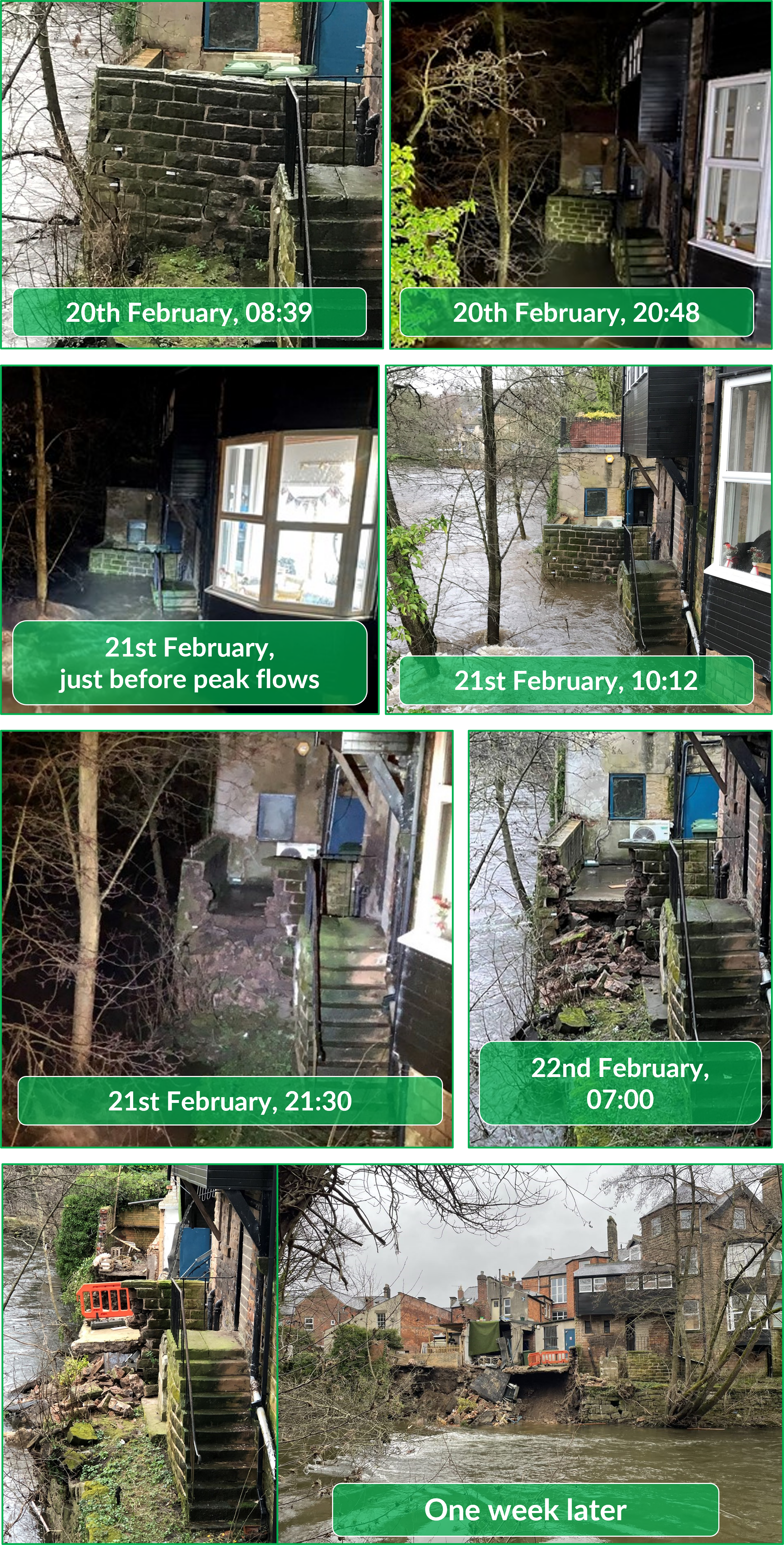
Our response

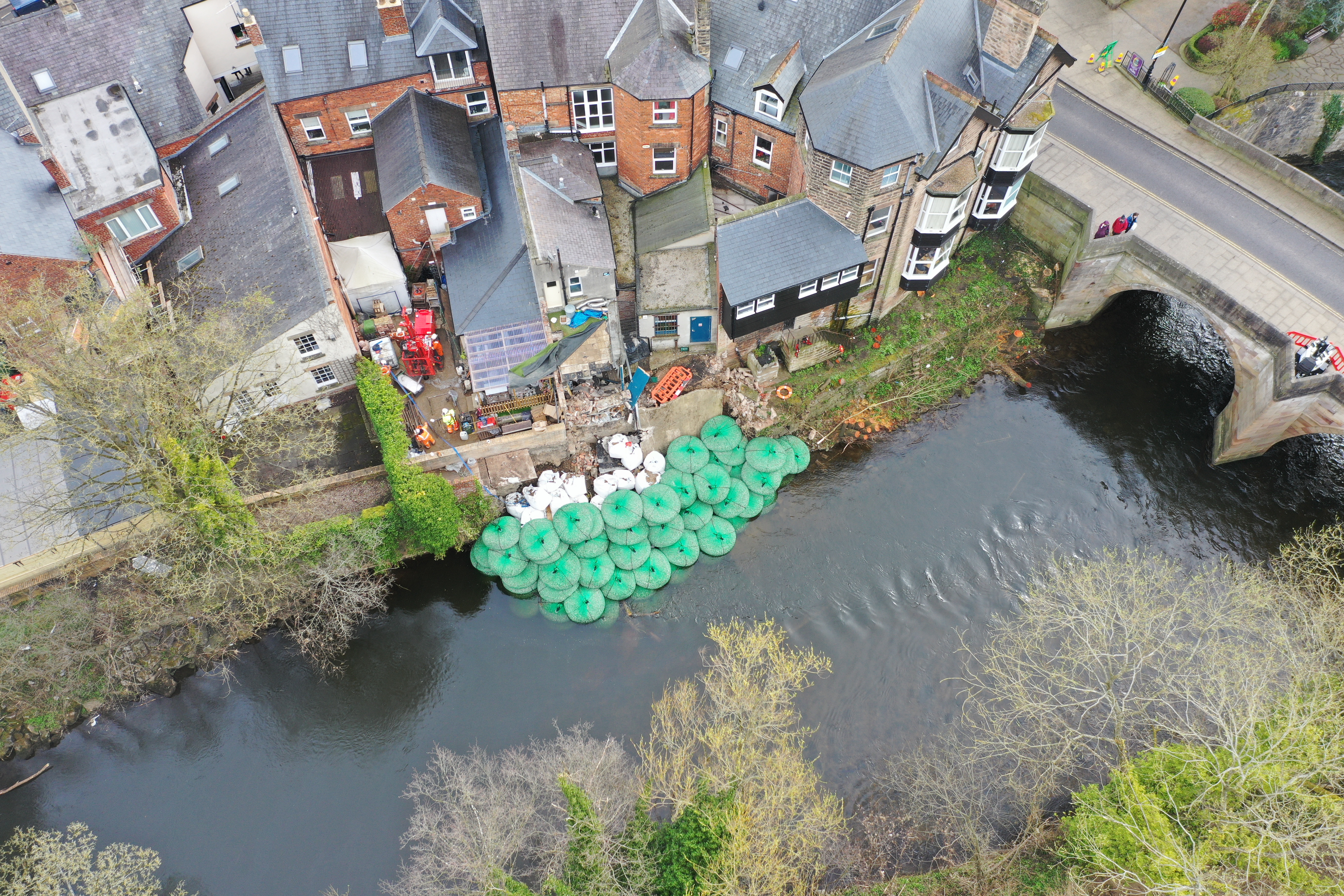
We hosted a community drop-in event with our partners on 19th May 2022 to share our plans with the local community.

Left to right: Julian Gould, Highways Director at Derbyshire County Council, Paul Reeves, Environment Agency Media Spokesperson, Tim Braund, Director of Regulatory Services at Derbyshire Dales District Council, Naomi Doughty, Environment Agency Matlock Wall Project Manager, Sarah Dines, Member of Parliament for Derbyshire Dales, Louise Cresswell, Environment Agency East Midlands Area Director.
Plans moving forward
The project is expected to cost between £3.5m and £5m and will reinstate flood protection to Matlock from river flooding. Enabling work started in early June 2022, which involved temporary alterations to Matlock Bridge to reinstate two-way traffic for a period. These essential enabling works paved the way for the main construction work, which replaced the flood wall behind businesses in Crown Square. The main construction work is likely to be delivered in multiple phases and the bulk of the engineered solution was in place before winter. We expect to continue work in stages throughout 2023 so we can make the engineered solution look more aesthetically pleasing and in-keeping with the local character and heritage of Matlock.
See below an approximate programme for the work.
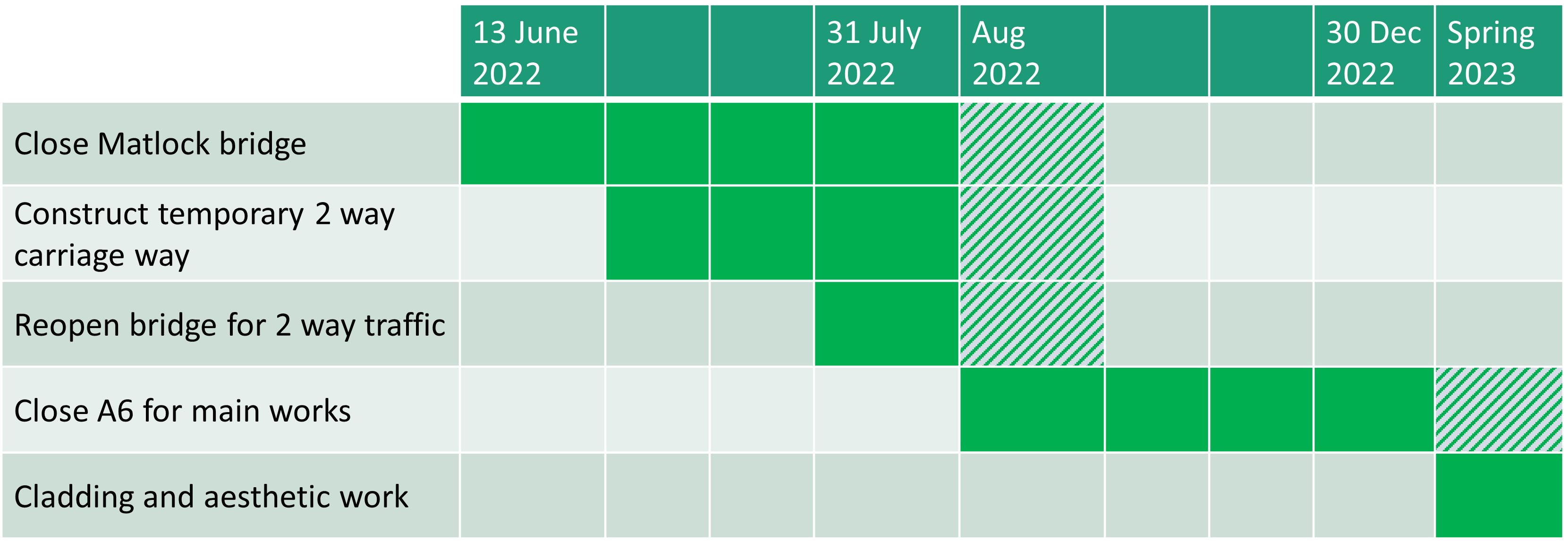
The Environment Agency, as a publicly funded body, has to ensure our interventions present value for the public purse. Each case is considered on its own merits as we carefully balance the costs and benefits of the available options. After a lot of care and consideration, including liaising with landowners and their insurers, we decided it was in the public good to repair the wall and reinstate flood protection to Matlock.
We arrived at this decision because the insurance situation is complex and protracted. Due to the age of the properties, there is ambiguity on what physical assets are actually covered by the various insurance policies that are held by the different landowners involved. There is no requirement for a landowner to re-build the wall and, even if they chose to, it may not be to the engineering standard required to provide flood protection to Matlock. To provide a robust flood defence, all landowners would need to work together and have the resources available to them to implement an engineering solution.
Behind Crown Square, there is no landward access to the river to carry out the repairs. This necessities the use of a large crane and riverside access – the costs of which (up to £5m) are beyond what can reasonably be expected to be met by a private landowner(s). Also, inaction by the Environment Agency or other public bodies would leave Matlock even more vulnerable to flooding. For these reasons, the Environment Agency decided to step in and rebuild the wall in this particular case.
Matlock Bridge Heritage
The old stone bridge over the River Derwent at Matlock has seen many alterations since it was built in the medieval period to accommodate changes in traffic. It is believed that originally a simple ford further downstream would have allowed people to cross the river. This location may be referenced in the AD 1086 Domesday Survey with the placename ‘Mestesforde’ – the river crossing and settlement associated with Nestes mine, now known as the Heights of Abraham. By the 13th century a bridge ‘Pontem de Matelocke’ stood upstream of Mestesforde.
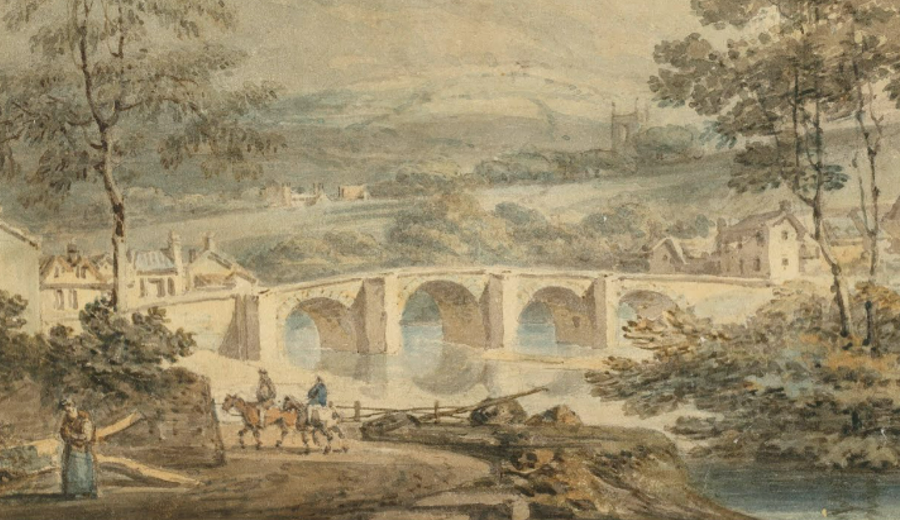
Watercolour painting by William Turner in 1794.
As the town of Matlock expanded, a new bridge was constructed at Matlock Bridge to carry people and goods across the river. The south-eastern part of the bridge dates to the mid-13th century with modification in the 15th century. From the late 19th century, the town became a popular spa destination, and a survey of traffic in August 1894 recorded around 1000 vehicles and 9000 people were crossing the bridge in a day. In 1904 the bridge was widened to accommodate two-way traffic until 2007.


Works to widen Matlock Bridge 1903-4.
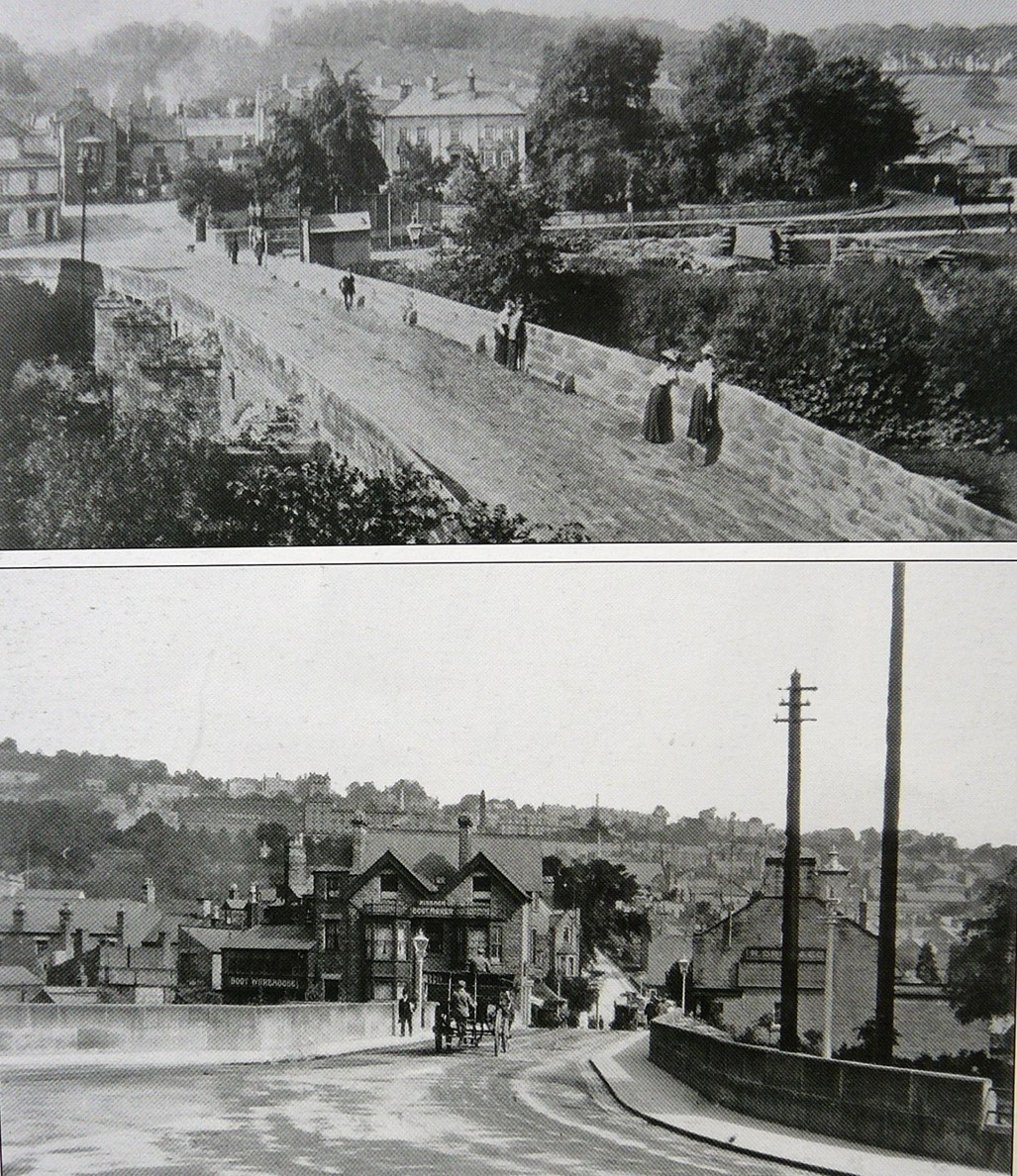
Matlock Bridge before and after widening (1904)
The bridge is of national importance and is both grade II* listed and a scheduled monument located within the Matlock Bridge Conservation Area. The Environment Agency is working closely with Derbyshire County Council and Historic England to ensure the bridge is protected during works to temporarily reinstate two-way traffic to facilitate repair of the flood wall to the north.

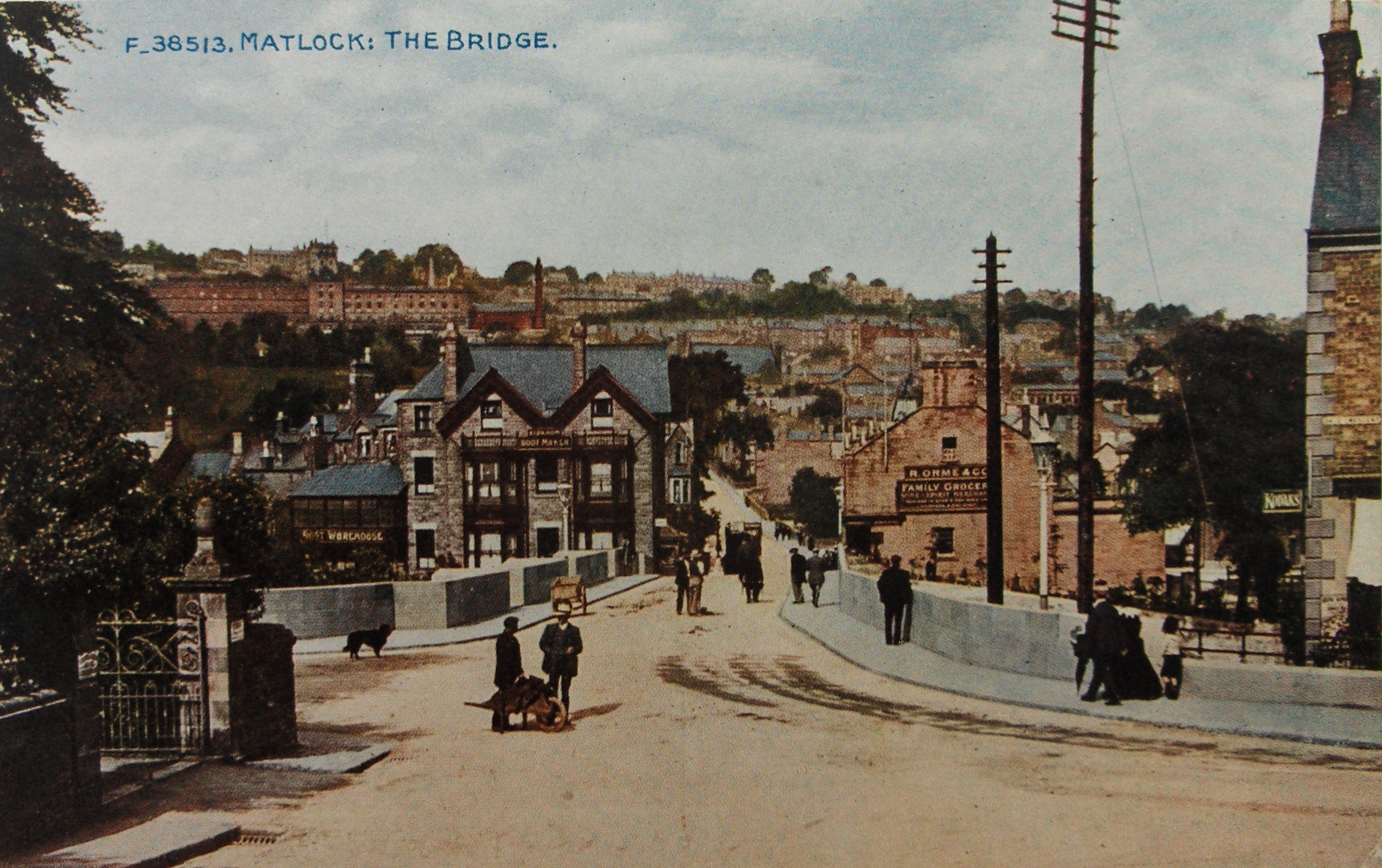
'Matlock – the Bridge’ Celesque series by Polychrom Co. Ltd.
Photographs kindly supplied by Matlock Civic Association. We would like to thank them for their assistance.
How to stay informed
Regular progress updates will be added to this page.
To find out more about this project, please visit the project information page at:
https://consult.environment-agency.gov.uk/east-midlands/matlock/ or use this QR Code;

Follow us on X (formerly twitter) @JacksonCivils and @EnvAgencyMids
Feedback
We would appreciate if you could spare a few minutes to complete a short survey about this information page.
Audiences
- Recreational and commercial river users
- Fishing clubs and representative associations
- Members of the public with an interest in the river, the species and conservation
- Businesses
- Charities
- Statutory organisations
- NGOs
- Members of the public
- Elected representatives, including MPs
- Local councils
- Environment Agency customers
- Local authorities
- District and parish councils
- Land owners
- RFCCs
- Community groups
- Flood action groups
- Environment Agency colleagues
- Lead Local Flood Authorities
- Local Risk Management Authorities
- Flood Resilience Forums
Interests
- Business and industry
- Flood management
- Fishing and boating

Share
Share on Twitter Share on Facebook